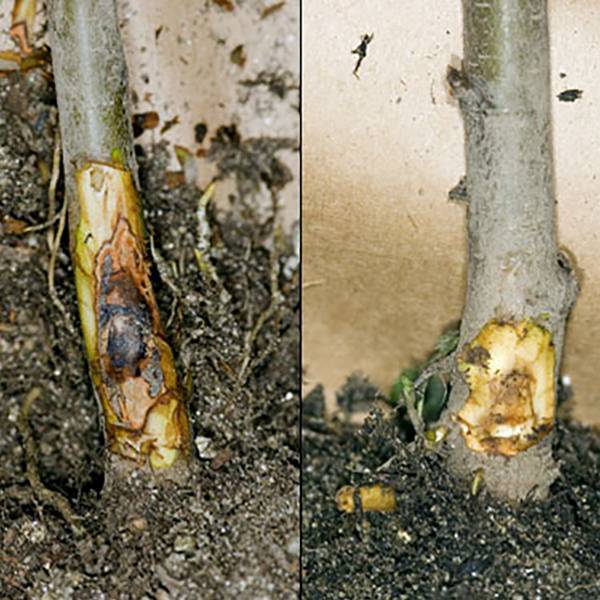problems Guide

Look at the lower part of the scion (the scion is the part of the plant that produces new shoots), and you may be able to see a depressed canker that can be purple, grey, or dark brown.
A dead giveaway can be a gummy exudate under the dead bark.
Another symptom can be early ripening of the fruit, which may be small and highly colored.
This is caused by soil pathogens.
Rub the base of the tree and if the bark comes away, you have collar rot
Remove the soil from around the trunk and look at the crown.
Peel back the bark from the trunk.
If it is infected with Phytophthora, the bark will be orange or brown instead of green.
Try not to plant in soil that drains poorly, has a lot of clay, and is damp and low.
Planting on a slope will provide the most drainage.
Channel water away from the trunk – do not allow a saucer to form in the soil around it.
And make sure that you don’t flood your trees if you irrigate them.
You can innoculate the soil with beneficial microbes which will help to complete with the collar rot microbes
Young trees that rock back and forth in the wind can develop an open area around the base of the trunk that invites infection.
Use a trellis or stake to support your trees.
If you plant your fruit tree more deeply than it was in the nursery, it can cause two problems.
One is that it will be more susceptible to collar rot.
The other is that you can lose the dwarfing when the cultivar strikes roots.